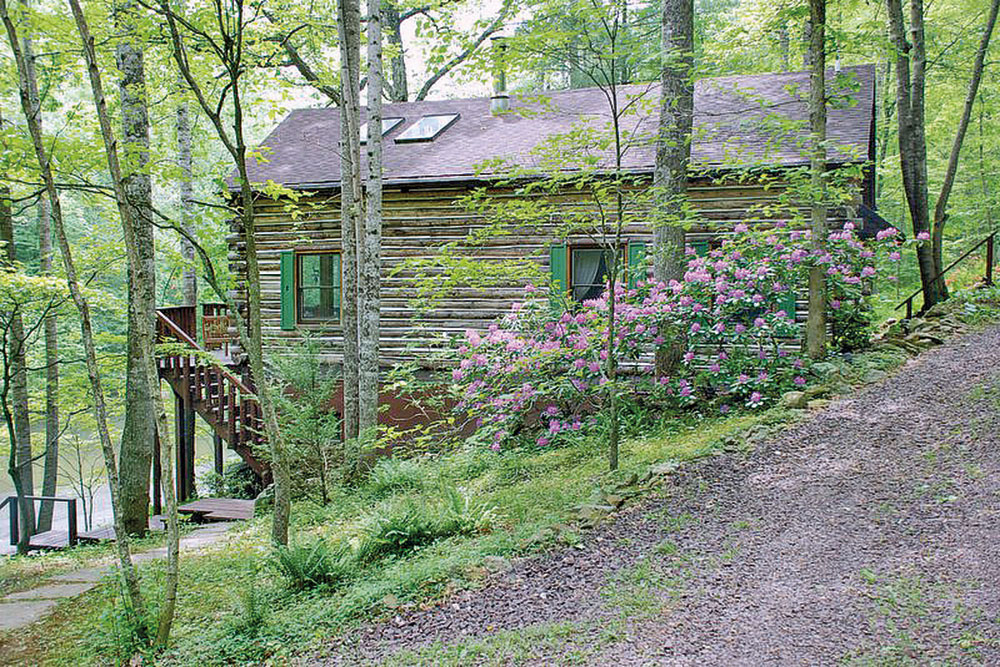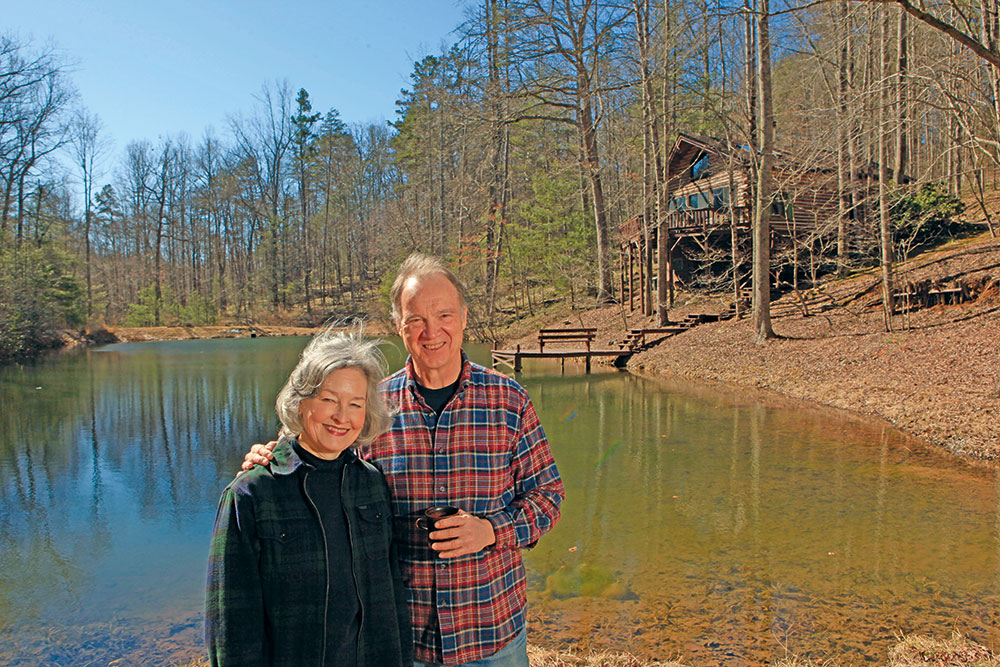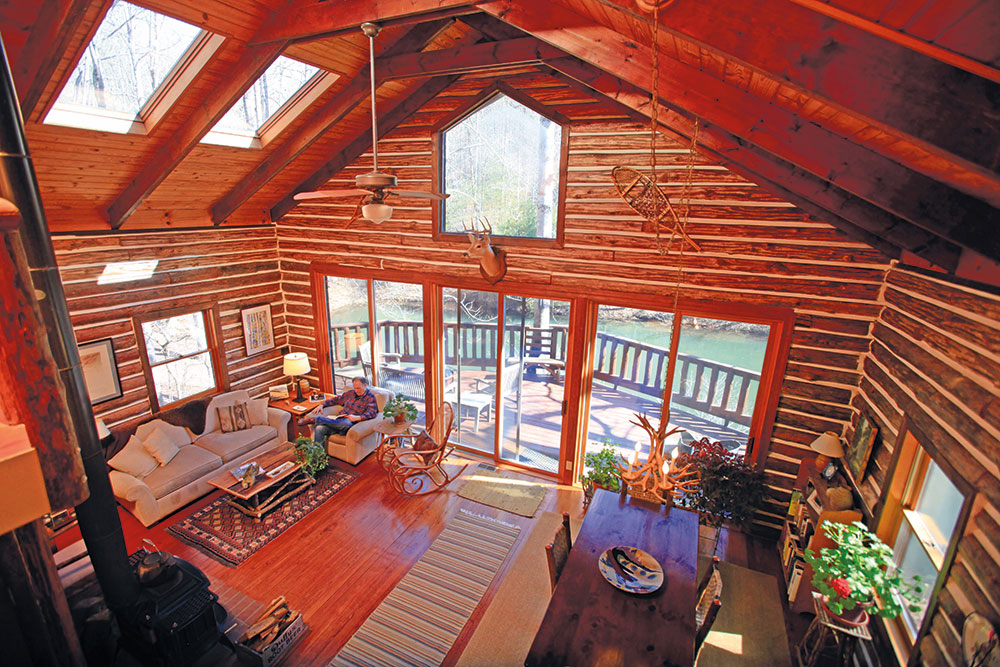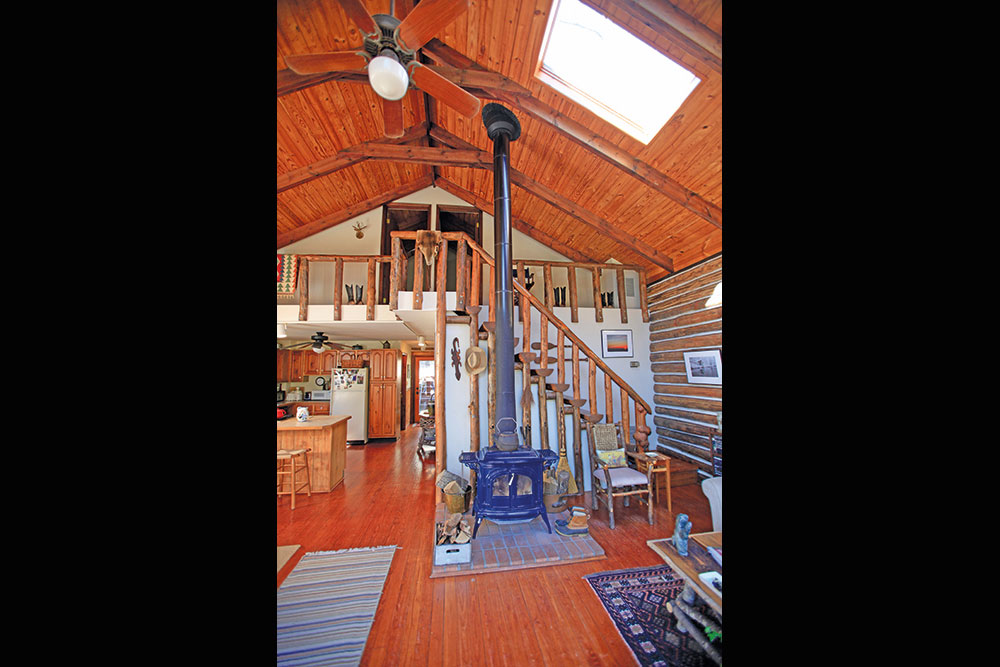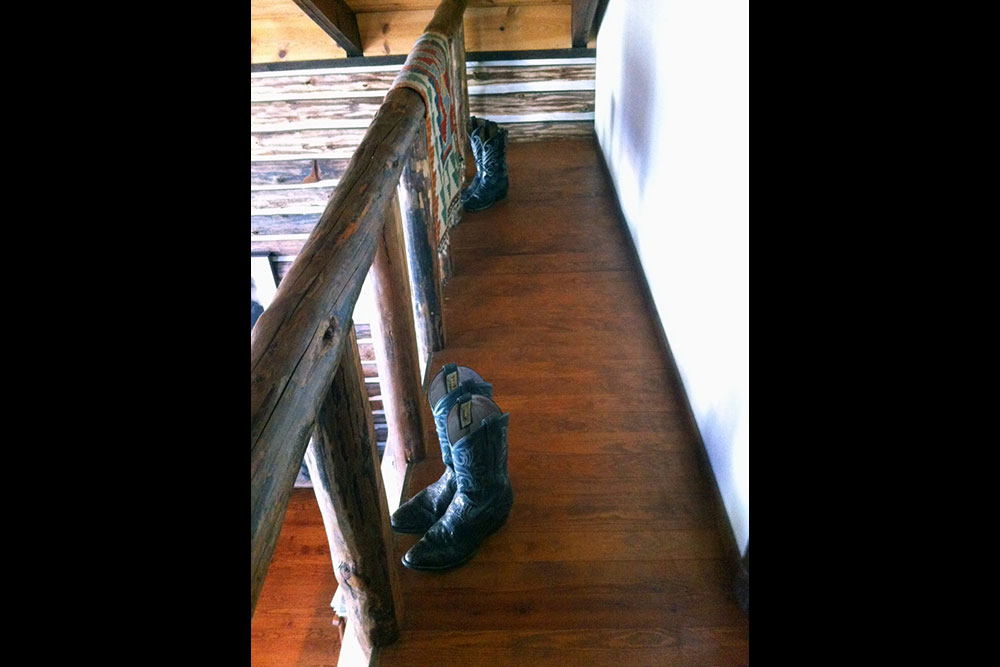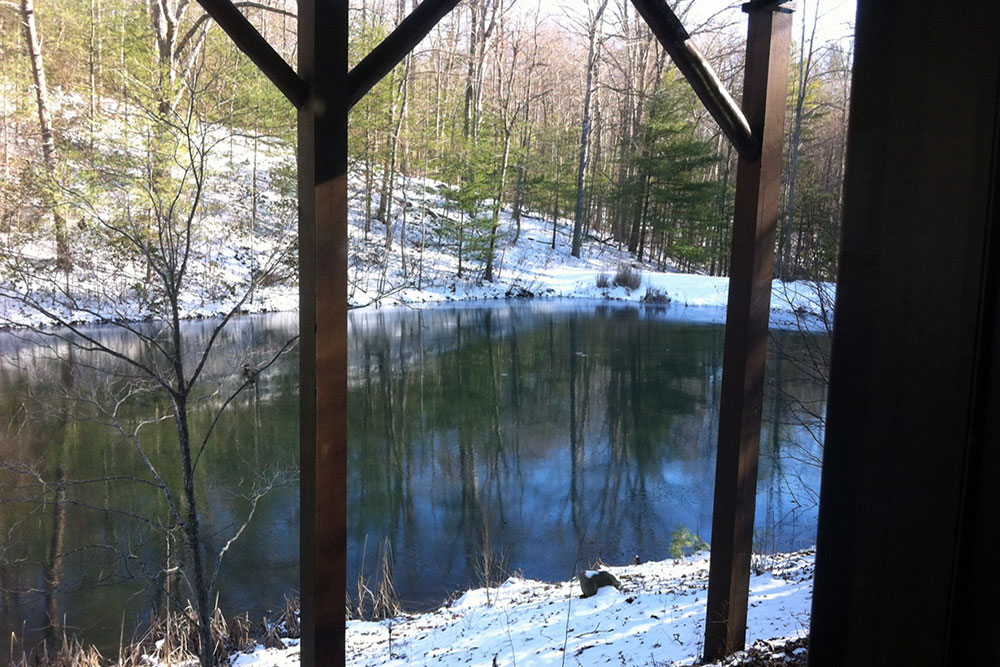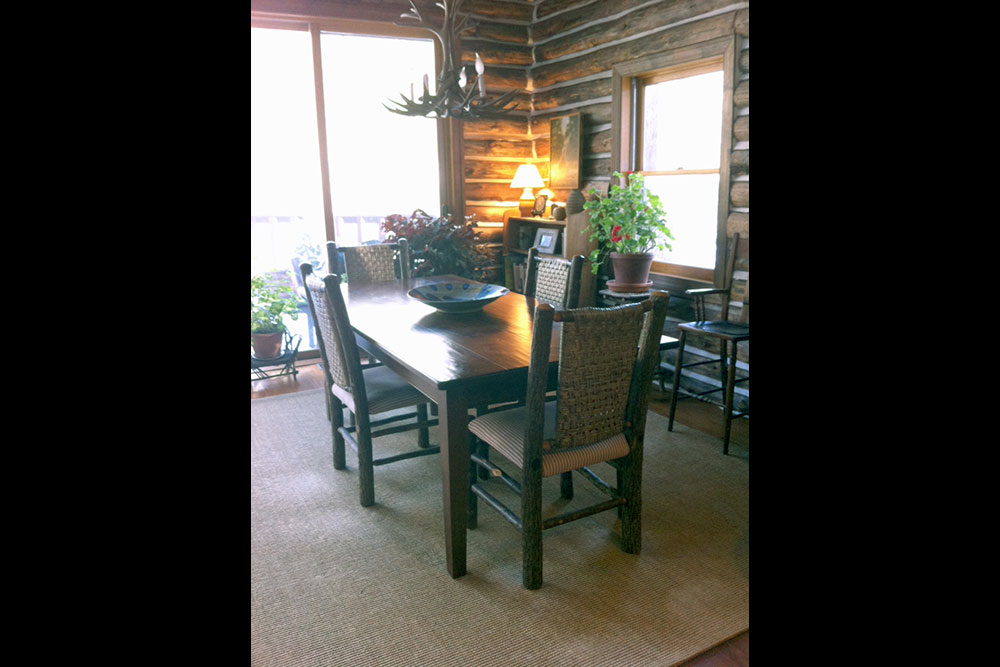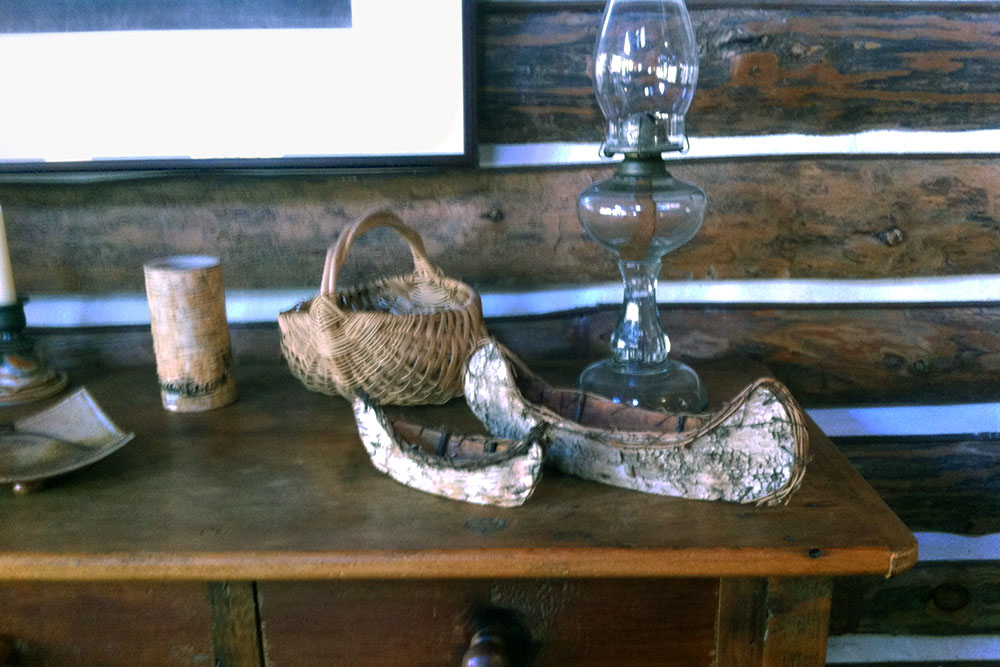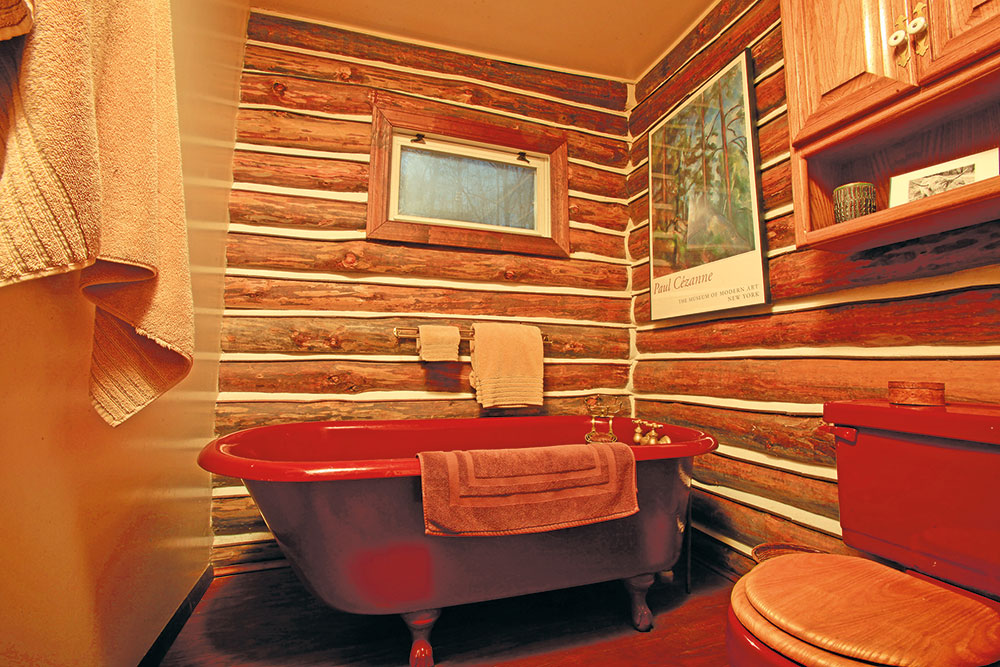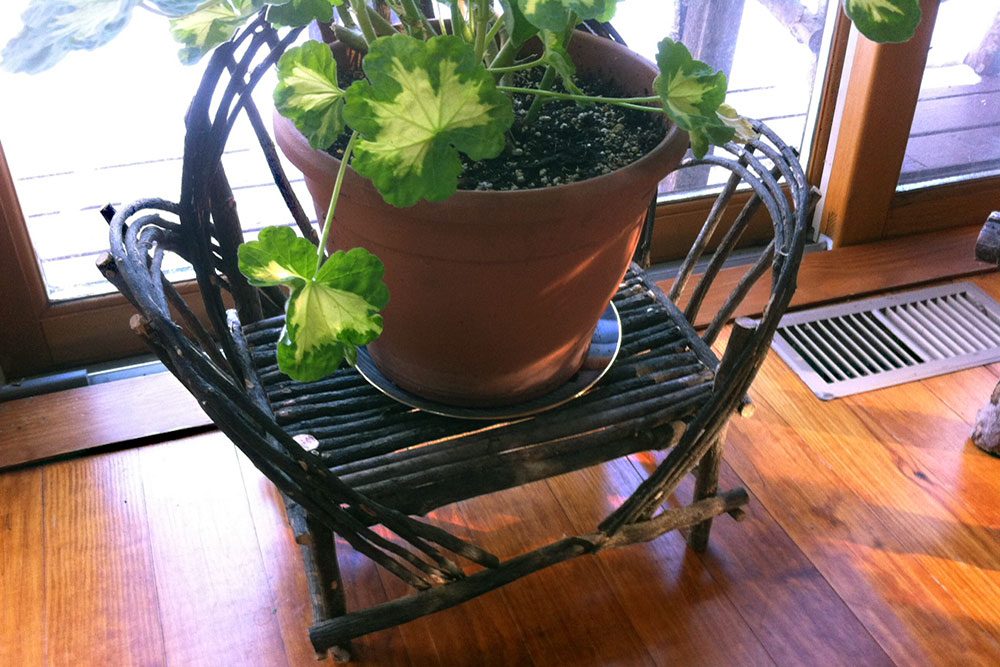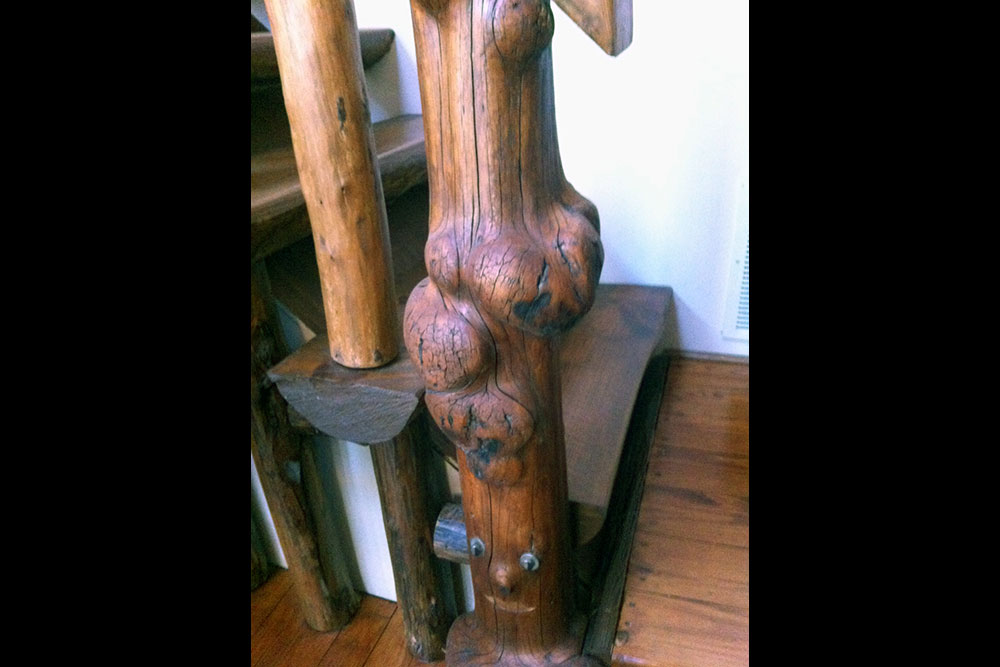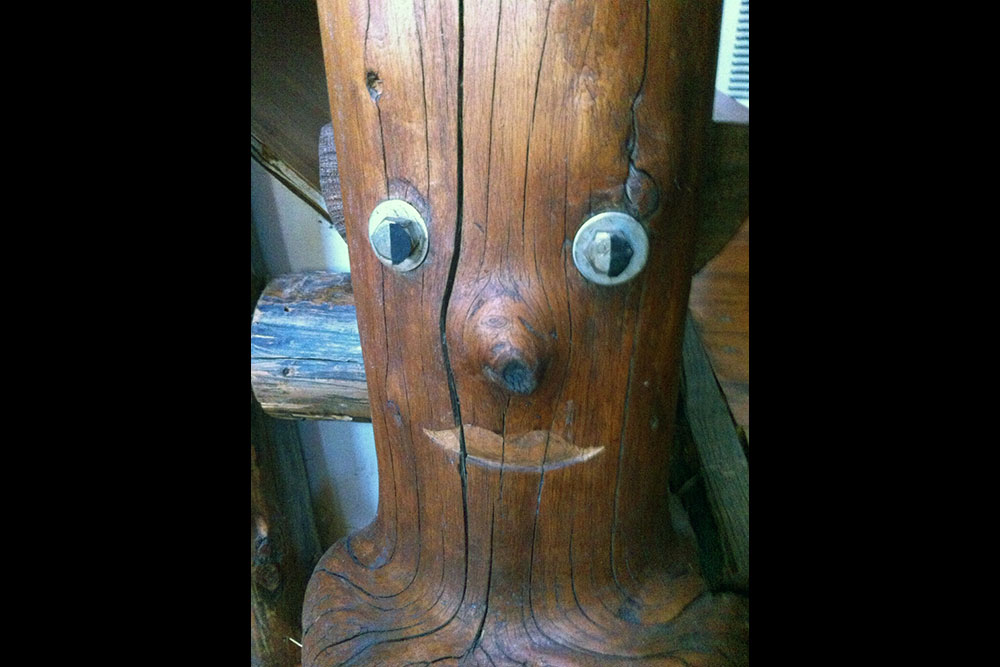A Piedmont Abode: the Cozy Country Cabin
This piece first appeared in spring issue of The Piedmont Virginian, the quarterly magazine of the Piedmont region of Virginia (go to http://thepiedmontonline.com).
IF PIEDMONT MEANS foot of the mountain or foothil—and it does—then we might say that the log cabin owned by Susan Raines and Jim Duffy is nestled somewhere down in the toes, surrounded by century-old trees, witness to river otters, bears, fox, the rare bobcat and, once, a mink.
The cabin came into being because of those trees. Some 38, 40 years ago—Raines and Duffy are trying to remember—the builder of the cabin, Keith Hay, took down a stand of trees in a depression of earth fed by a creek and a natural spring. There he scooped out the pond that shimmers up at visitors today. The pond is so clear and clean that the stumps of those trees can still be see at the bottom of the water, says Duffy.
And the sacrificed trees? They were the raw material for the cabin Hay built on the promontory above, the cabin whose south-facing porch now looks down on the watery activity below and the hillside opposite. The sight of the hillside, in fact, is a seasonal one. “When the trees leaf out,” says Duffy, “you can’t tell there’s a hill there; it’s just trees.”
Duffy is a political consultant (a partner in Putnam Partners, which worked on Obama ads during the last campaign) and Raines a longtime arts executive (the Corcoran Gallery of Art, Arts International, the National Endowment for the Arts), so when they started thinking about a country place, friends thought they would never take the time to just chill.
One couple who were being transferred out of the area for a year offered their Madison County, Virginia, house so Duffy and Raines could see if they liked it. To the friends’ surprise, but not to Duffy and Raines’s, they did. “We came out every weekend,” says Raines. “We loved it.”
The search for their own place took a while, with a series of disappointments. Then one day their real estate agent called and said, If you really want what you say you want—woods, water and a somewhat rustic cabin—then I have it for you!
The cabin, in the Rappahannock County community of Castleton, Virginia, was built in a western style, with round logs rather than the large squared-off logs found in the many 19th-century log cabins in the Piedmont. And with its interior of exposed-log walls—the chinking forming a horizontal striping that characterizes log cabins and Tuscan cathedrals alike—the original cabin was rather dark.
“The original cabin had one door and a bay window on the pond side,” Raines explains. But the duo purchased the place from the subsequent owners, who had punched south-facing skylights into the angled ceiling of the living room. Now, with the pond wall almost all glass, with big sliding doors, light pours into the combined living and dining room, penetrating the large room all the way back to the kitchen, which is separated from the dining table by a counter.
In a quiet corner adjacent to the west-facing entrance to the approximately 1,350-square-foot main floor is the master bedroom, across the entryway from a large bathroom complete with nostalgic-looking claw-foot bathtub. Looking down over the main room—and over the wood-burning stove that keeps the house cozy—is a balcony that leads, by way of log stairs, to two guest bedrooms tucked up under the eaves and sharing a bath. (The balcony itself is arrayed with the owners’ cowboy boots set along its length.)
The house has plenty of room for the owners and grown children, stepchildren and grandchildren, from previous marriages, Duffy’s to a fellow Louisianan, Raines’s to former New York Times executive editor Howell Raines. But Raines and Duffy decided to build out the lower level as well, effectively doubling the home’s square footage and adding a large bedroom and a TV-watching area (“a man pit,” Duffy calls it).
When Duffy can be dragged away from the wood-chopping he loves (“You should see the wood shed,” says Raines. “It’s complely filled!”), the couple, who have been together 22 years and married for 17, can tramp around the 30 acres of their pie-shape property. Their parcel, and the 100 acres that surround them on three sides, are threaded with hiking trails, thanks to Keith Hay, the outdoorsman who built the cabin and was a member of the national Lewis & Clark Trail Commission. Hay returned to the cabin after Raines and Duffy purchased it and guided them all around the property; he died last spring. Kent Hickman, one of the former owners, who still lives in the area, brings his dog to hike the Raines/Duffy trails.
The dinner dishes at the cabin are appropriately rustic. The beds have headboards and footboards fashioned from logs. But the little bark canoes and twig tables that dot the living room share space with contemporary photography, as befits Raines’s position as co-president, with neighbor and fellow photographer Gary Anthes, of the Middle Street Gallery in Sperryville, Virginia.
In the 12 years the couple have been coming to the cabin, they’ve learned a few country truths. “We now know the black snake is your friend,” says Duffy. (Black snakes feast on the mice that would otherwise take up residence in the house, especially in winter.) And they’ve learned the unpleasant truth about the playful little river otters that visited their large-mouth-bass-stocked pond. “I thought they would eat a few [fish], surely they wouldn’t eat them all,” Raines says in what remains of a charming Tuscaloosa, Alabama, accent. “They ate every single one.” Raines has been restocking, buying fish at the Rappahannock Co-op, but says she needs to do more.
And they have learned that, like everything else in nature, ponds have their life-cycle—a beginning, middle and end. They start as fields, get dug or somehow filled with water, then eventually silt in and, in old age, become fields again. The Raines/Duffy pond is in healthy midlife—perhaps light on fish at the moment but otherwise healthy and sparkling. Much the same can be said about its owners.
—Nancy McKeon
MLB thanks Dennis Brack, publisher of The Piedmont Virginian and a former Washington Post colleague, for allowing us to reprint this work.
